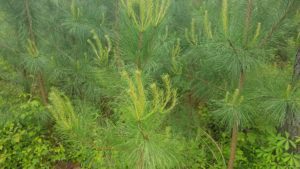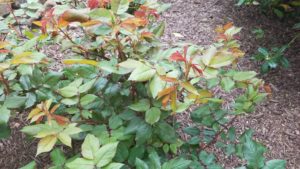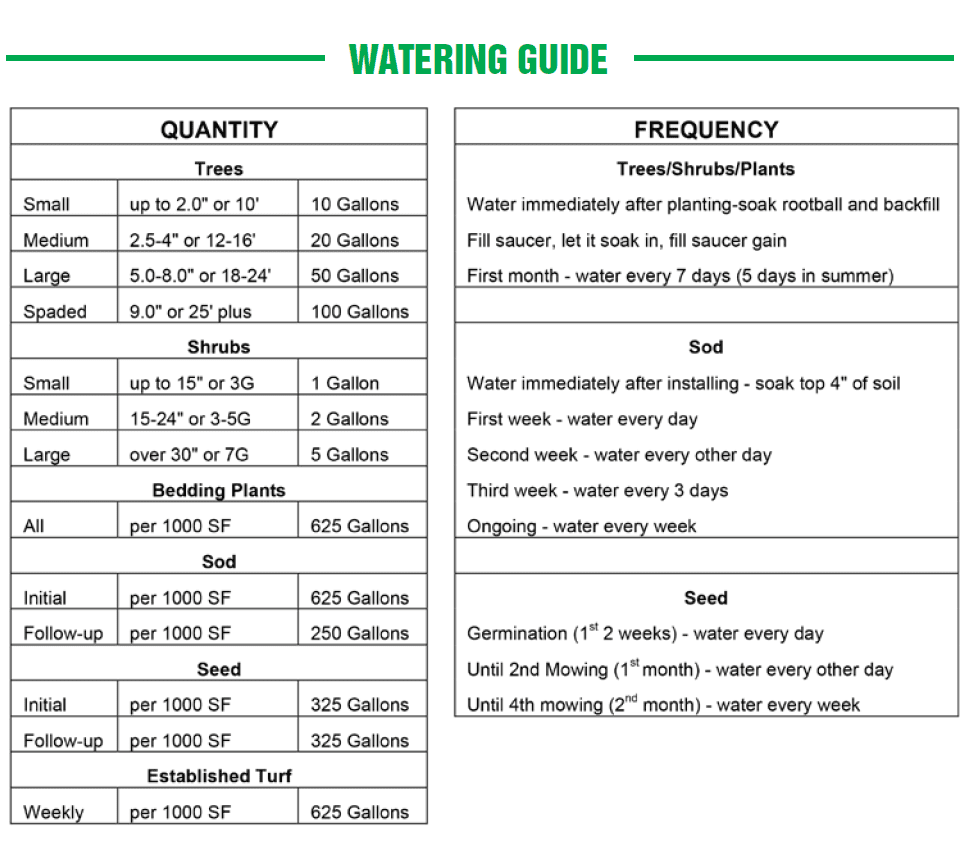 By Ken Thompson, Director of Quality and Efficiency, Landscape Construction Division
By Ken Thompson, Director of Quality and Efficiency, Landscape Construction Division
We all know that trees and shrubs need water to survive and grow. But what’s often overlooked is the delicate balance we need to strike so that they grow at the right pace for sustainability and long-term health.
 In the spring, both deciduous and evergreen trees and shrubs go through a growth period called “tender leaf,” a process of leaf growth and stem elongation. Plants having access to water during this time is crucial for the new shoots to be able to reach their full size potential in order to collect more sunlight, photosynthesize and produce food. These new leaves and stems are much more productive than older ones in terms of collecting light for the plant, which helps the root system grow as well. If plants do not get enough water in this time, it can result in smaller leaf development, shorter stems, or shorter “candles” on needled plants. Having smaller stems and shoots for the duration of summer and fall will inhibit plant growth above and below the ground.
In the spring, both deciduous and evergreen trees and shrubs go through a growth period called “tender leaf,” a process of leaf growth and stem elongation. Plants having access to water during this time is crucial for the new shoots to be able to reach their full size potential in order to collect more sunlight, photosynthesize and produce food. These new leaves and stems are much more productive than older ones in terms of collecting light for the plant, which helps the root system grow as well. If plants do not get enough water in this time, it can result in smaller leaf development, shorter stems, or shorter “candles” on needled plants. Having smaller stems and shoots for the duration of summer and fall will inhibit plant growth above and below the ground.
Pictured top: Newly developed “candles” on a Pinus (white pine). These candles can grow up to a foot long and will eventually develop into a new stem, with the small green dots developing into green needles.
 Typically the spring months are full of rain, however, too much rain and fertilizer can actually over-produce new shoots and leaves to the point where the root system may not be able to support it through the summer. The key is to achieve a balance of the root to shoot ratio, shearing new shoots if necessary. This produces healthy plants which are able to ward off insects, diseases, molds and fungus.
Typically the spring months are full of rain, however, too much rain and fertilizer can actually over-produce new shoots and leaves to the point where the root system may not be able to support it through the summer. The key is to achieve a balance of the root to shoot ratio, shearing new shoots if necessary. This produces healthy plants which are able to ward off insects, diseases, molds and fungus.
Pictured center, bottom: A Rosa (knockout rose) shrub and Taxus (dwarf yew) both exhibiting tender leaf (the lighter leaves/shoots)
 Maintaining healthy plants is accomplished by closely monitoring the water/hydration in both irrigated and non-irrigated landscapes. Even well-established plant material may suffer drought stress, caused either by excessive spring growth or poor leaf and stem development. These challenges increase exponentially when it comes to newly installed landscapes. In many cases, particularly with B&B plants (balled and burlapped), the root systems have been severely reduced during the digging process. Proper watering, which includes watering deeply and frequently, enables proper root development and fosters new growth for optimum health.
Maintaining healthy plants is accomplished by closely monitoring the water/hydration in both irrigated and non-irrigated landscapes. Even well-established plant material may suffer drought stress, caused either by excessive spring growth or poor leaf and stem development. These challenges increase exponentially when it comes to newly installed landscapes. In many cases, particularly with B&B plants (balled and burlapped), the root systems have been severely reduced during the digging process. Proper watering, which includes watering deeply and frequently, enables proper root development and fosters new growth for optimum health.

 By Ken Thompson, Director of Quality and Efficiency, Landscape Construction Division
By Ken Thompson, Director of Quality and Efficiency, Landscape Construction Division